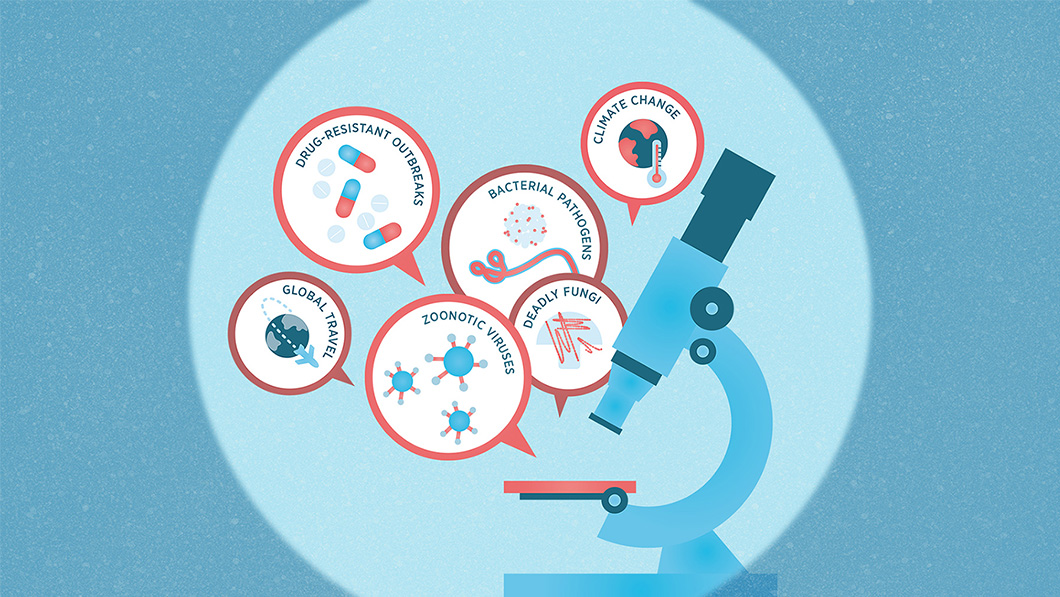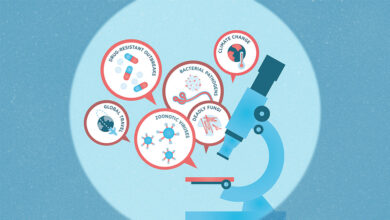
A prime cyber-attack target and Canadian-made vaccines
Sponsored by:

PPF: Health Security
PPF’s report The Next One: Preparing Canada for another health emergency outlines the lessons learned from the pandemic and how Canada can safeguard against future health emergencies. To keep the discussion going — and to keep Canadians informed — this newsletter looks at what’s happening in the world of health security each week. Here’s what we’re following:
Not ‘if’ but ‘when’
Another U.S. health-care system is struggling to regain control of its systems after a cyberattack earlier this month. Ascension, which operates approximately 140 hospitals across the U.S., was hit with what the company called “unusual activity” in early May, forcing some of its operations offline. In more than a dozen states, doctors and nurses have had to move to handwritten records and can’t access patient data stored online.
The attack was reportedly carried out by Black Basta, a ransomware operator that first appeared in 2022. The hacker group has hit enterprises in multiple countries, including Japan, Canada, the U.K., Australia and the U.S. Typically, the group threatens to publish stolen sensitive data, though so far, it hasn’t done so. Already, some patients have filed lawsuits, that allege Ascension is not doing enough to protect their data.
“The health sector lags far behind most essential infrastructure sectors, such as energy, transport, nuclear or water, on research to understand the risks and develop specific plans to protect, respond and recover from cyberattacks,” The Lancet noted in an editorial this past week. The journal upbraided U.S. health-care organizations for allocating only seven percent of their spending to cybersecurity, compared to the 11 to 12 percent average in other sectors.
“The investments in research and resources in cybersecurity need to level up to other sectors,” The Lancet stated. “Cybersecurity incidences in health care are rising and they are not a question of if, but when. Cybersecurity is not just an IT issue. It is a matter of health.”
Life expectancy reversal
The COVID-19 pandemic set global life expectancy progress back by a decade, according to new data from the WHO. The organization’s latest World Health Statistics show that from 2019 to 2021, global life expectancy dropped by 1.8 years to 71.4 years, sliding back to 2012 levels.
But this global average hides geographic differences. For example, the WHO data also shows that in the Americas and South East Asia, the drop in life expectancy was more pronounced – approximately three years. But in the Western Pacific Region, the drop was much smaller, at 0.1 years.
In a press release, Dr. Tedros Adhanom Ghebeyesus, the WHO’s Director General, pointed to the global pandemic accord as being an important factor in strengthening global health security, protecting long-term investments in health, and promoting equity between countries.
On that note, the unfinished global pandemic accord was subject to continued discussion at the World Health Assembly (WHA) in Geneva last week. While member states made no further progress on the accord itself, they did agree to keep working on it. “Member States reiterated that the world needs a pandemic agreement built on the principles of equity, sovereignty, and prevention, preparedness and response, and to ensure future generations are safeguarded from the threat of inevitable future pandemics,” the WHO said in a release.
Third human H5N1 case
A third U.S. farm worker has tested positive for avian flu, again in Michigan (but on a different farm than a previous case). The worker experienced respiratory symptoms.
There is growing concern about the increased risk to farm workers. According to the United Farm Workers union, there are around 150,000 dairy farm workers in the U.S., the majority of whom are undocumented. The conditions under which a lot of dairy farm workers operate put them at greater risk of exposure, including spending as many as 12 hours a day in close quarters to cow udders, said a spokesperson from the United Farm Workers. These workers are also often housed communally, making self-isolation complicated.
Meanwhile, the U.S., Canada and countries across Europe are beginning to prepare vaccines – including for farm workers – Reuters reports. If deployed strategically to dairy farmers, health-care workers and those in close contact with infected animals, “it would put a pin in the virus,” Wendy Barclay, chair of influenza virology at University College London told the outlet, although she said it was not clear if this step was necessary yet.
A handful of alpacas have tested positive for the strain of H5N1 that is currently circulating amongst dairy cattle and other farm animals in the U.S., according to the U.S. Department of Agriculture. The four alpacas were on a farm in Idaho (which had 18 in total) and tested positive in mid-May. The same farm reportedly also had an outbreak of avian flu amongst its poultry, which were then culled.
Canadian-made vaccines
Prime Minister Justin Trudeau was at the opening of Sanofi’s new vaccine manufacturing facility in Toronto last week to tout his government’s $20-million investment in the project, which the PM’s press release billed as “one of the most advanced vaccine manufacturing facilities in the world.”
It’s certainly the largest biomanufacturing facility in Canadian history (at 200,000 square feet) — home to around 200 employees and intended to produce vaccines for whooping cough, tetanus and diphtheria for domestic and international use. But it’s not the only new Sanofi facility in Canada. Another one, which will produce flu vaccines, is now scheduled to open in 2027, a year later than originally planned when it was announced in 2021.
On another note about Canadian vaccines: POLITICO reported that during the COVID-19 pandemic, the Canadian government signed off on a deal with AstraZeneca that allowed the vaccine maker to vet all public announcements related to a contract for up to 1.9 million shots. The government did not respond to POLITICO’s questions about the highly unusual deal.
Hot hot heat
India recorded its first heat-related death of the year as an intense heatwave settled on the region this past week. Temperatures in New Delhi reached 52.9C on Thursday, similar to highs reached in Pakistan earlier in the week. More than 37 cities across India reported temperatures above 45C last week. In New Delhi, power demand hit an all-time high as people tried to cool their homes and businesses and authorities restricted access to water as supplies ran low.
India and Pakistan are frequently hit by heatwaves, including one that killed nearly 100 people in northern India last year.
This week the World Health Assembly approved the WHO’s Fourteenth General Programme of Work, or GPW 14 — a high-level roadmap for global health that will guide the organization’s work between 2025 and 2028. Climate change is one of GWP 14’s priority focus areas — a response, the document states, “to the escalating threat that climate change poses to health in the 21st century.” The GPW 14 cites extreme weather events as not only increasing in frequency, but also disproportionately impacting “particularly vulnerable areas,” including small island developing states.
Events
June
- June 12-13: The Festival of Genomics & Biodata. Boston, MA
- June 13-14: International Conference on Food Science and Biotechnology. Montreal, QC.
- June 18-21: Global Health Security Conference. Sydney, Australia
- June 20-21: 7th Annual Next-Gen Immuno-Oncology Conference. Boston, MA.
- June 26-28: BioPharma Expo. Tokyo, Japan
- June 30-July 3: European Congress on Biosecurity. Rotterdam, Netherlands.
July
- July 24-28: Bio Asia Taiwan. Taipei, Taiwan.
Did someone forward you this newsletter? Subscribe to PPF: Health Security newsletter
This newsletter is produced by journalists at PPF Media. It maintains complete editorial independence.



